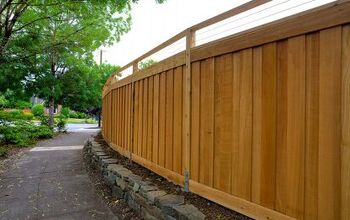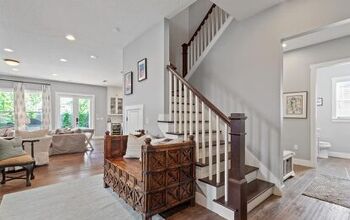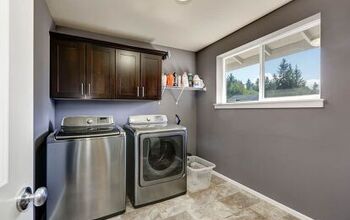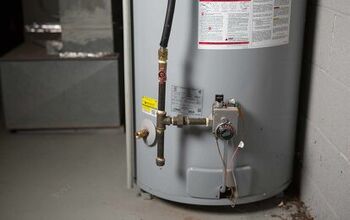Designing A Kid-Friendly Home Without Sacrificing Style

Designing your home when you have kids becomes a balancing act between beauty, functionality, and fewer breakable objects. Your entire mindset shifts when creating a kid-friendly home, and you might even fear that a stylish space is out of reach. However, by knowing where to focus your efforts, you can design a beautiful home, kids and all.
Create a flexible layout that can change as your kids grow. Use furniture and decor that doubles as storage to hide toys and other items. Work with durable materials that hold up under lots of wear and tear, and always keep safety in mind. Round edges, cordless blinds, and furniture anchors are musts. Make spaces functional and accessible for adults and kids.
Trying to maintain a space that looks beautiful when you have kids can sometimes feel like trying to rake leaves in a hurricane. But it is possible to create a home that looks, feels, and functions well for adults and children. If you’re not sure how to go about it, keep reading to discover a few easy, valuable tips that make the process much more approachable.
Six Tips For Designing A Beautiful Home That Works With Kids
It’s no secret that having children makes you think about things you never paid much attention to before. When it comes to home design, you start foregoing aesthetics for things like how durable the sofa fabric is or finding a table without corners. But the good news is that today, there are plenty of options and ways for your home to be stylish and kid-friendly.
1. Assess Your Layout And Keep It Flexible
If your home already has an open-floor concept, consider yourself on the winning side of designing a kid-friendly home. How nice is it to meal prep in the kitchen and keep tabs on the kids in the living room at the same time, right?
But open-concept floor plans come with their own set of challenges, primarily, they can become a bit confusing. Is it a den? Dining room? Game room? All of the above? Therefore, define zones within the space that make the purpose of each area clear.
For example, you might have a table and chairs behind the couch that clearly says this is where we eat, play games, etc. You could take this zone a step further by adding a storage bench on one side of the table that holds board games and puzzles.
A cozy pair of chairs by the window, flanked by baskets of blankets and a bookshelf, invites people to read quietly. Need more privacy? A standing room divider does the trick.
If you don’t have an open concept, don’t start knocking down walls. Simply make sure you keep flexibility in mind when planning your rooms. What starts out as a play room might one day become a home office as the kids get older.
On the flip side, a home gym may need to become a play room if you don’t want all the toys to live in your den. Your home gym may need to move to a converted shed or a corner of your bedroom, or you need to tweak your workout regimen.
2. Choose Durable Materials
Nothing puts a sofa to the test like a rowdy toddler with a sippy cup full of grape juice. When selecting furniture for your home with kids, choose performance fabrics, leather, or opt for washable slipcovers.
All of these fabrics are available in a slew of styles, colors, and sizes, so you can find pieces that hold up well and also look good. It’s also important to apply this practice to things like flooring, paint, and decor.
Hardwoods with a matte finish are forgiving; luxury vinyl and terrazzo tile are other durable options that don’t sacrifice style. To add softness, use large area rugs with busy patterns to help hide stains (why do you think hotels choose the carpets they do?).
Paints with a satin finish mask dents and scratches well and are easier to clean than flat paints.
Eggshell is another kid-friendly finish. If you have budding artists who love to hone their creative skills on the walls, use special paint treatments.
Chalkboard paint or dry-erase paint in a designated area invites adults and children to draw as they please. (Even better, frame a large piece of wood painted with chalkboard paint and hang it to have ever-changing artwork.)
3. Look For Pieces That Offer Safety And Style
One of the biggest factors when designing a kid-friendly home is safety. Now you’re considering the corners on your tables, how top-heavy a bookshelf is, and skipping over breakables in the home decor aisle.
Look for rounded edges as much as possible, anchor tall furniture to the wall to avoid a nasty tip-over, and look for kid-friendly accessories. Gravitate toward fabric decor, wood, and other sturdy materials. For things you already have that are breakable, reimagine your design scheme to display them up high, out of reach of curious fingers.
Window treatments are another area where safety needs to be a priority. Avoid blinds or curtains with cords and ropes. Secure rods into the wall studs, or use anchors when necessary, so a hard yank doesn’t pull everything down.
4. Incorporate Stylish Storage Options For Your Furniture And Decor
You can’t have kids in the home and not have the typical things that come along with them. You know this list — toys, books, stuffed animals, endless blankets, random socks, trinkets, scraps of paper that are your child’s most-prized possessions.
No matter what your kids are into, they’re likely going to accumulate quite a bit of stuff. This doesn’t even include the things they actually need, like pencils and crayons to do homework, shampoo, clothes, etc.
Of course, paring down clutter is vital, and teaching your children that so much stuff isn’t necessary is a great lesson. But for the things that stay, you don’t have to keep them all on display and make your home look like the last-standing Toys ‘R Us.
Find furniture that doubles as storage, like ottomans, coffee tables, and benches with built-in compartments, drawers, and baskets. These are all great ways to contain kid clutter.
Add cabinets to built-ins or bookshelves to incorporate more closed storage into a room. Choose a few stylish baskets to hold (and hide) blankets and stuffed animals.
5. Give Kid-Centric Pieces A Sophisticated Touch
If someone visits your home, can they tell that kids live there? Are toys scattered across the floor and artwork plastered across the fridge? Is there a blanket covered in cartoon characters draped across your sofa?
These things are quick giveaways. Don’t worry, it’s pretty much impossible to hide every trace of children in the home — and you shouldn’t have to. But you can reimagine some of these things in a more sophisticated way.
Have fun with your color palette, selecting neutrals throughout most of your home but bringing in fun, whimsical colors through accessories. You might have a fuzzy, pink pillow in your reading nook or a bright teal pouf that slides under the coffee table. These things add a playful touch for your kids without going too far into the “my home looks like a preschool” zone.
Put your children’s artwork in stylish frames and create a gallery wall. Hang a wooden rope swing in the living room to double as quirky seating. Add a cute, neutral kid tepee to the corner with comfy cushions inside to invite kids to read in quietly (and stash their books and stuffies out of sight).
These things are examples of pieces that don’t try to hide the fact that kids live in the house. However, they do show a more sophisticated way to decorate with kids in mind, so that adults and children can enjoy their home.
6. Remember The Kids When Designing Each Space
Your kids live in the home, too, so you have to think about them when you design the various rooms. Any place your kids are going to use needs to accommodate them, otherwise, the room isn’t as functional as it needs to be. (And lack of function equals poor design.)
This step doesn’t need to be complicated. It simply means looking at each place from a kid’s point of view. It’s almost like the trick they tell new parents about (and new pet owners, come to think about it) — it’s to crawl around a room to get an idea of how a child sees it.
It makes sense. Your adult perspective may not realize that the breakable vase is well within reach of your five-year-old. You might fail to notice that someone who isn’t at least 4 feet tall can’t reach the bathroom sink.
Include kid-appropriate seating in the living room. Put a fold-out stool under the bathroom sink vanity and in the kitchen. Tuck a stylish booster seat in the corner of the dining room. Think about what your kids need to use each room efficiently, then include it in a stylish way.
Yes, It’s Possible To Have Kids And A Stylish Home (And Still Enjoy Your Space)
Kids keep you on your toes, in life and your home, but don’t put away all the breakables and throw towels over all the furniture. Instead, use some thoughtful planning to blend style, safety, and durability.
Start with one room, adding kid-centric updates that meet your family’s ever-changing needs and your style. You’ll discover that there’s a beautiful middle ground between high-end design and toy room chic that you and your kids will love.
Related Guides:
- Simple Tricks For Containing Kid Clutter
- Tips To Create A Functional And Stylish Open-Concept Floor Plan
- 7 Easy Ways To Create A Fun And Functional Playroom

Nick Durante is a professional writer with a primary focus on home improvement. When he is not writing about home improvement or taking on projects around the house, he likes to read and create art. He is always looking towards the newest trends in home improvement.
More by Nick Durante










![How Much Weight Can a 4×4 Support Horizontally? [It Depends!]](https://cdn-fastly.upgradedhome.com/media/2023/07/31/9070333/how-much-weight-can-a-44-support-horizontally-it-depends.jpg?size=350x220)

![10 Best Electric Lawn Mowers - [2022 Reviews & Top Rated Models]](https://cdn-fastly.upgradedhome.com/media/2023/07/31/9070486/10-best-electric-lawn-mowers-2022-reviews-top-rated-models.jpg?size=350x220)
![The 10 Best Table Saws - [2022 Reviews & Buyer's Guide]](https://cdn-fastly.upgradedhome.com/media/2023/07/31/9070645/the-10-best-table-saws-2022-reviews-buyer-s-guide.jpg?size=350x220)
![Finishing Basement Without Permit [Is It Really Illegal?]](https://cdn-fastly.upgradedhome.com/media/2023/07/31/9070078/finishing-basement-without-permit-is-it-really-illegal.jpg?size=350x220)












